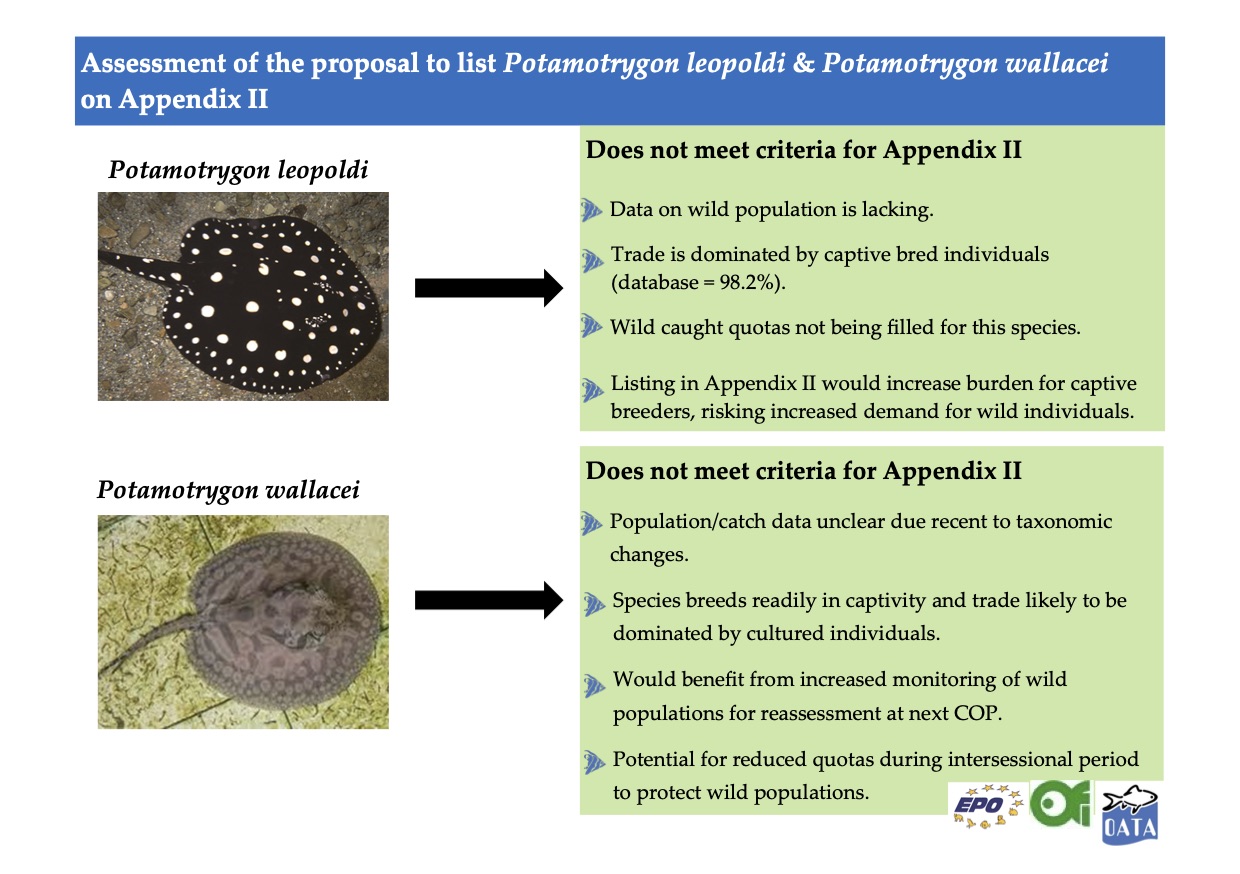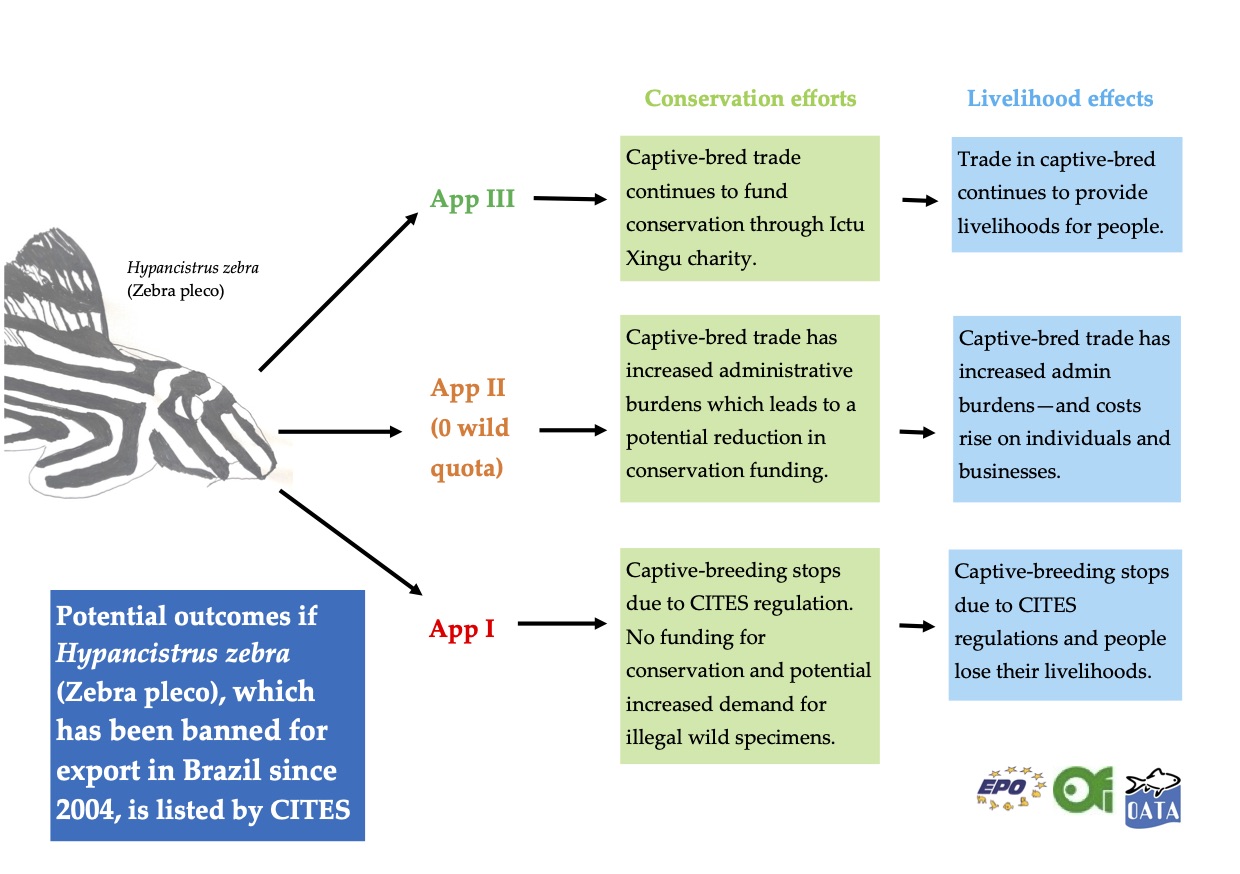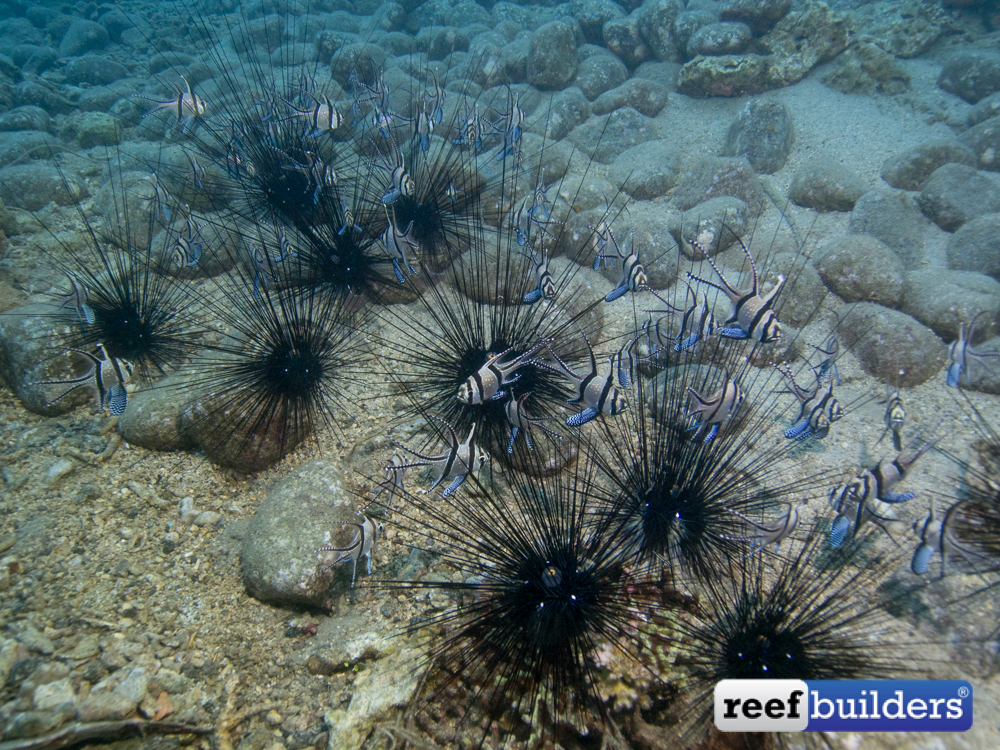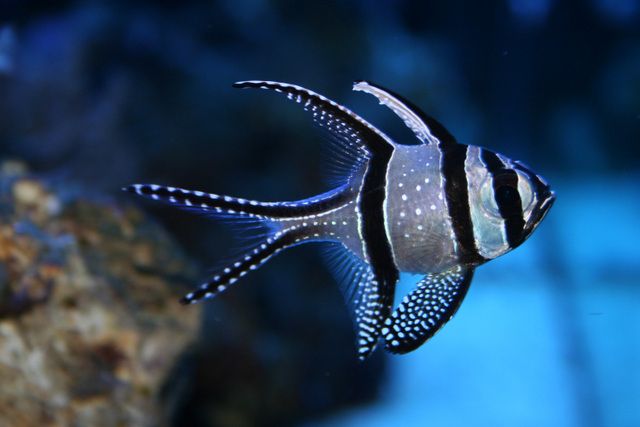The Convention on International Trade in Endangered Species is to discuss ornamental fish species at their annual Conference of Parties, held this year in Panama. The Convention regulates everything wild from Tigers to Timber, with the aim of ensuring that any trade in wild animals does not threaten the survival of the species. That includes all fish and aquatic invertebrates.
52 proposals will be made in this year’s meeting, two of which will affect the aquatic trade, as well as a workshop to discuss the trade in non-CITES listed marine ornamental fish, the type of which we keep in our aquariums.
The first aquarium fish to be discussed are seven species of South American freshwater stingrays, Potamotrygon albimaculata, P. henlei, P. jabuti, P. leopoldi, P. marquesi, P. signata and P. wallacei. Brazil is proposing to include the stingrays in CITES Appendix II, but the Ornamental Aquatic Trade Association (OATA) the European Pet Organization (EPO), and Ornamental Fish International (OFI) do not support this, as they say the trade is mostly in captive-reared fish rather than wild-caught, and that there is a lack of clear evidence on wild population declines.

Next is the popular Zebra pleco, Hypancistrus zebra, a fish we keep and breed in the Reef Builders Studio. The proposal is again by Brazil, this time to move Zebra plecos from Appendix III to Appendix I. Again, the pet trade associations above do not support this and say there is a lack of evidence that it is needed, a position they say, which is supported by the international UN Fisheries and Agriculture Organisation (FAO) following considerations by an expert panel of fisheries experts.
OATA says wild-caught Zebra plecos are already banned in Brazil with the only trade being in legal, captive-reared fish. Captive breeding adequately meets the demand for plecos in the trade and also funds the conservation of wild populations in Brazil. The trade associations say the evidence does not show there has been a population decline in wild-caught plecos. If Zebra plecos are moved from Appendix III to Appendix I then even captive breeding will stop, there will be no funding for conservation, as well as creating an increased demand for illegal wild specimens, argues OATA.
“CITES is about managing the sustainable trade in wildlife and its decisions should be based on robust data.” Says OATA Chief Executive Dominic Whitmee. “It is clear these proposals do not have enough evidence behind them and that is also the position taken by the expert panel of the United Nations Food & Agriculture Organization (FAO), a well-respected independent Intergovernmental Organisation.”

Marine Ornamental fishes Workshop
The Animals Committee, representatives from range States, exporting and importing countries, fishery stakeholders, industry representatives, governmental and non-governmental organizations will also participate in a technical workshop to consider the conservation priorities and management needs of non-CITES listed marine fish. Data from importing and exporting countries will be submitted to the Animals Committee along with findings and recommendations. The Animals Committee will then consider the results and make recommendations to the 20th CoP in a year’s time.
“We also remain concerned about the progress of the marine ornamental fish proposal,” continues Dominic Whitmee. “Our aim is always to ensure decisions are made on the best data and science for the benefit of people and the planet and we will continue to press for clarity and transparency about how this project will progress. We, along with OFI, will continue to offer our support to all that is planned for this proposal because it could have very far-reaching consequences for our industry.”

Banggai cardinal conservation status
It’s not all doom and gloom however as the Animals Committee also considered a document submitted by Indonesia on the management measures they’ve made with the Banggai cardinalfish, Pterapogon kauderni. The country presented a progress report on the conservation and management measures taken to ensure the sustainability of international trade in Banggais, including population surveys, the establishment of a marine protected area, monitoring guidelines, rehabilitation guidelines, and the establishment of a harvest quota.
The Committee acknowledged and noted the document and appreciated Indonesia’s efforts which, as explained in that report, have resulted in many positive outcomes of Banggai cardinalfish protection, conservation, and management that promote their sustainable trade. As Banggai cardinalfish are not listed under the Appendices, efforts on their conservation and management are regulated under Indonesian national laws.
The Committee acknowledged the current status of Banggai cardinalfish as a non-CITES listed species and, referring to significant progress achieved by Indonesia, encouraged the country to continue its work to promote their conservation, management, and sustainable trade. Sharks, Rays, Seahorses, and stony corals are also on the CoP 19’s agenda.



